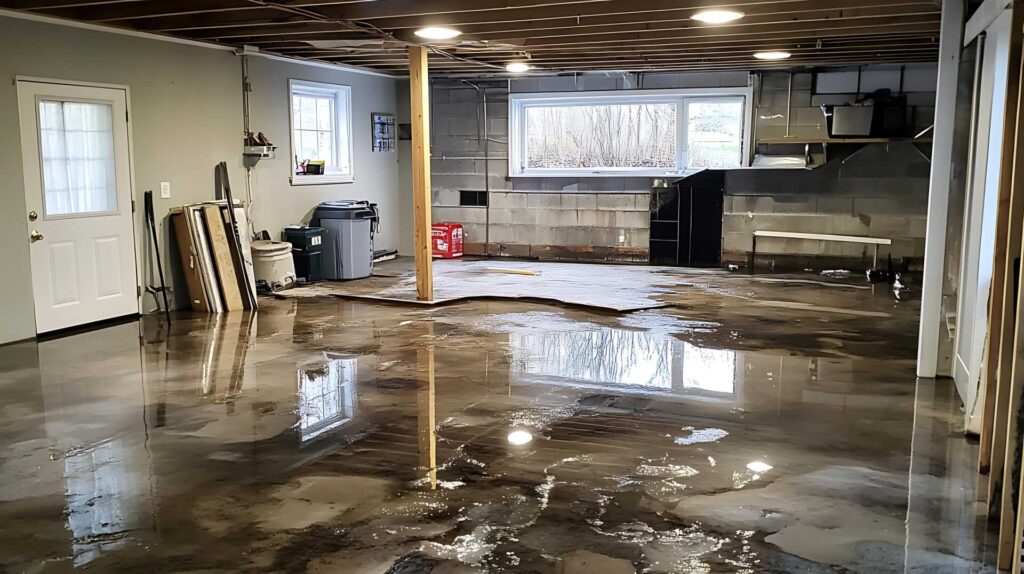
Contents
When dealing with water damage in commercial properties, water extraction is the first crucial step. Act swiftly by evaluating the damage and pinpointing the source of water intrusion. This initial step sets the stage for selecting the right equipment and extraction techniques. Understanding these processes can greatly impact the outcome of your restoration efforts. Let’s explore how to implement these steps effectively and ensure a safe environment for occupants.
Key Takeaways
- Identify the source of water intrusion and evaluate the extent of damage to prioritize extraction efforts effectively.
- Utilize high-capacity extractors and industrial-grade dehumidifiers for quick and thorough water removal.
- Implement air movement techniques to enhance evaporation and speed up the drying process.
- Continuously monitor moisture levels to ensure complete extraction and prevent mold growth.
- Ensure team safety by using protective gear and assessing electrical hazards in the affected area.
Assessing the Water Damage
When dealing with water damage in commercial properties, a thorough assessment is essential.
You’ll want to start by identifying the source of the water intrusion—whether it’s from a burst pipe, flooding, or another cause. Next, evaluate the extent of the damage. Inspect walls, ceilings, and flooring for signs of moisture, mold, or structural compromise. Use moisture meters and thermal imaging cameras to detect hidden dampness that may not be visible to the naked eye.
Document your findings with detailed notes and photographs, as this information will be vital for insurance claims and restoration planning.
Pay special attention to electrical systems and equipment, as water exposure can create significant hazards. By conducting this meticulous assessment, you’ll understand the immediate impact and set the stage for effective restoration strategies.
Choosing the Right Equipment
Choosing the right equipment for water extraction is crucial to ensuring efficient and effective restoration in commercial properties. The right tools expedite the process and ensure a thorough cleanup, minimizing future risks.
Here’s what you should consider:
- High-Capacity Extractors: Invest in powerful water extractors that can handle large volumes quickly, reducing downtime.
- Dehumidifiers: Opt for industrial-grade dehumidifiers to eliminate moisture from the air and prevent mold growth.
- Air Movers: Use air movers to enhance evaporation and speed up the drying process, ensuring surfaces dry uniformly.
- Protective Gear: Don’t overlook the importance of safety equipment like gloves and masks to protect your team during the extraction process.
Implementing Efficient Extraction Techniques
To achieve ideal results in water extraction, it’s essential to employ techniques that maximize efficiency and effectiveness. Start by evaluating the area, identifying high-risk zones, and prioritizing them. Use a combination of extraction methods—like vacuuming and air movement—to expedite drying. Always monitor moisture levels to ensure thorough extraction.
Here’s a quick reference table for efficient extraction techniques:
| Technique | Description | Benefits |
|---|---|---|
| Vacuum Extraction | Removes water using suction | Fast and thorough removal |
| Dehumidification | Reduces humidity in the air | Prevents mold growth |
| Air Movement | Speeds up the drying process | Speeds up drying process |
| Thermal Imaging | Detects hidden moisture | Targets specific areas |
| Regular Monitoring | Continuous evaluation of moisture | Ensures complete extraction |
Review
Effectively extracting water from commercial properties isn’t just important—it’s crucial for preserving the integrity of your space. By thoroughly evaluating the damage, choosing the right equipment, and employing efficient extraction techniques, you can tackle even the most intimidating water intrusion challenges. Don’t underestimate the power of rapid response and continuous monitoring; they can be the difference between a minor inconvenience and a catastrophic disaster. Ensure a safe environment for your occupants by taking swift, informed actions.
Recent Posts
Why Choose Professional Water Extraction and Mold Cleanup?
When faced with water damage, you can’t afford to overlook the risks of mold growth.
What Are Emergency Water Extraction Services?
Water damage can strike unexpectedly, yet the right emergency water extraction services can make a
Affordable Mold Removal Services for Businesses
Did you know that mold can silently undermine your business’s health and safety standards? Ignoring
